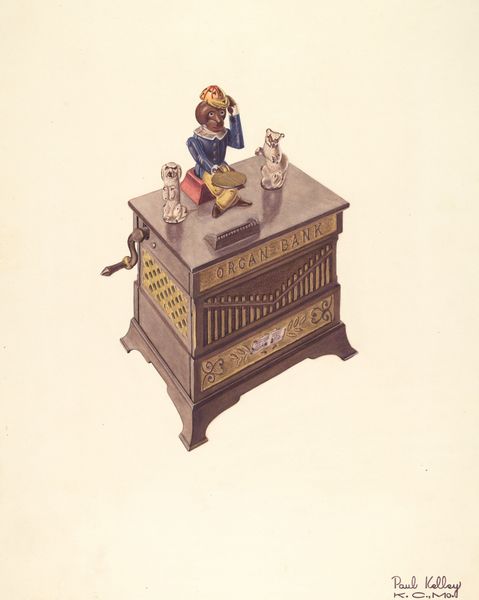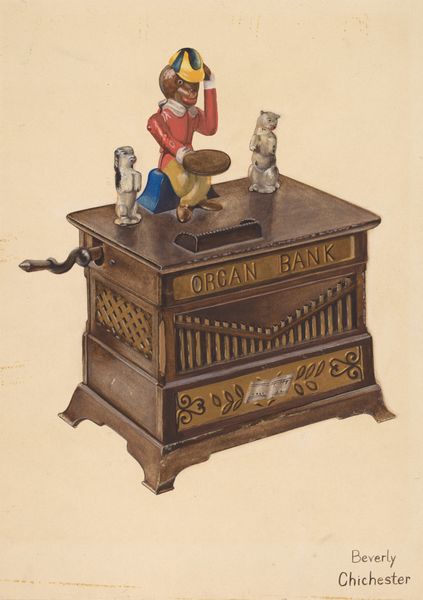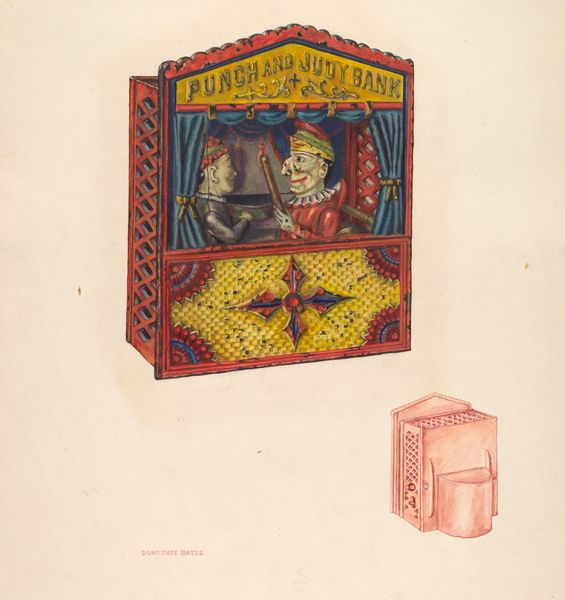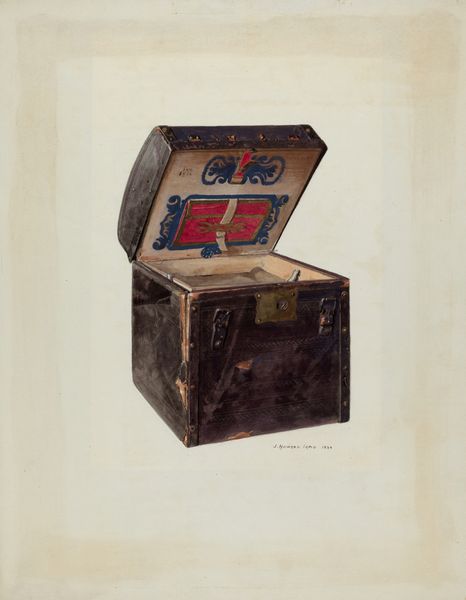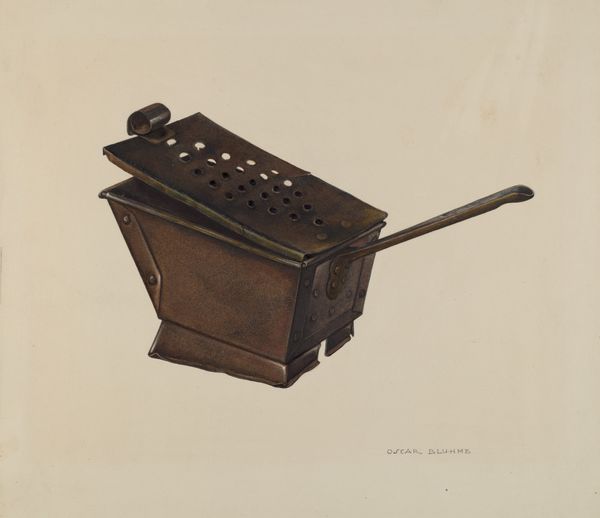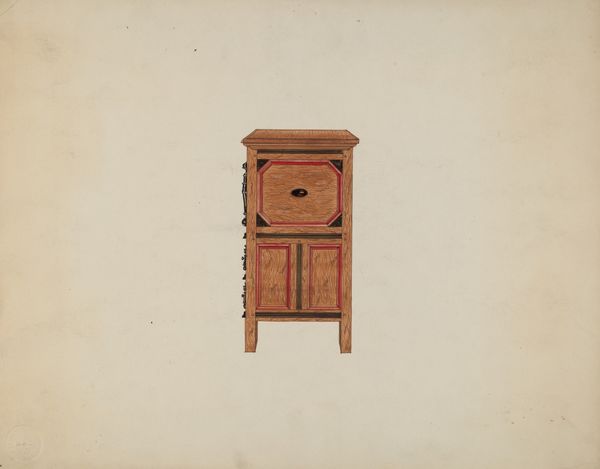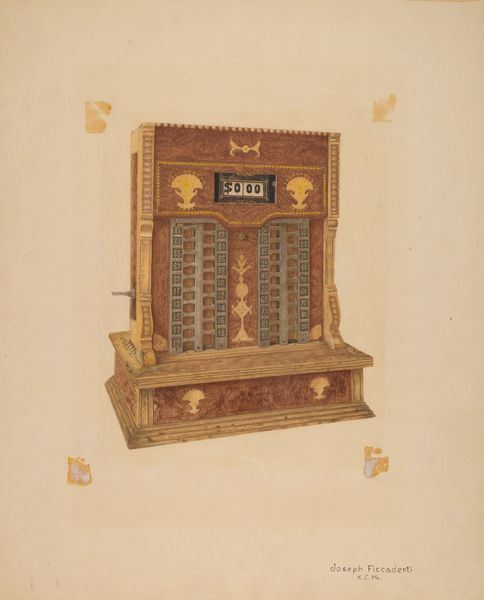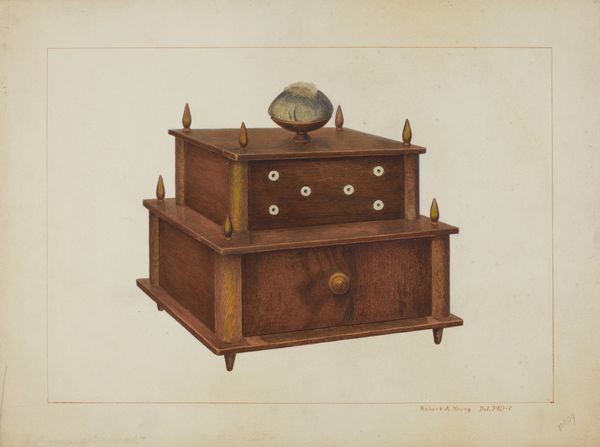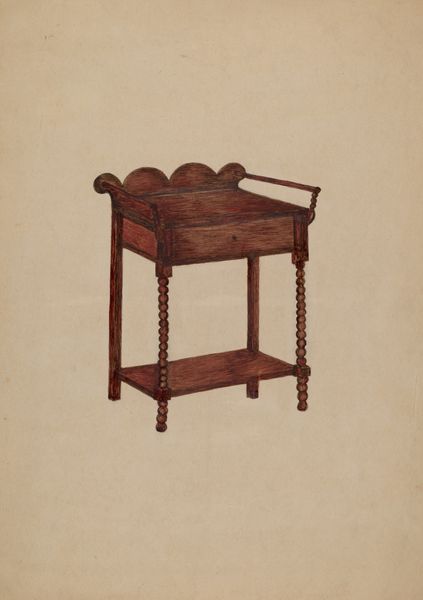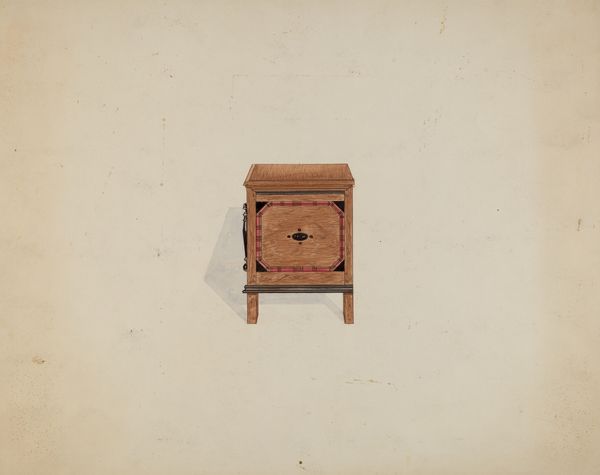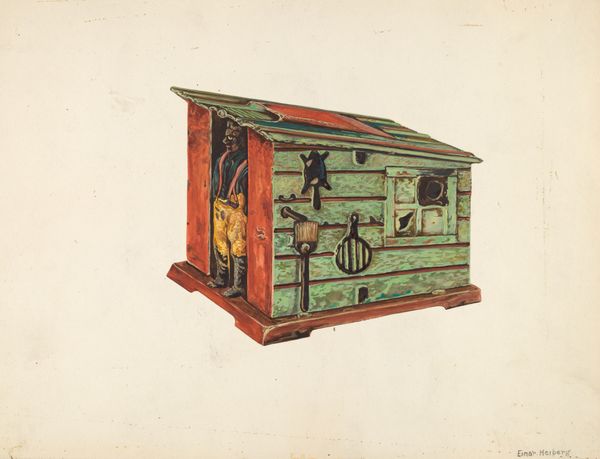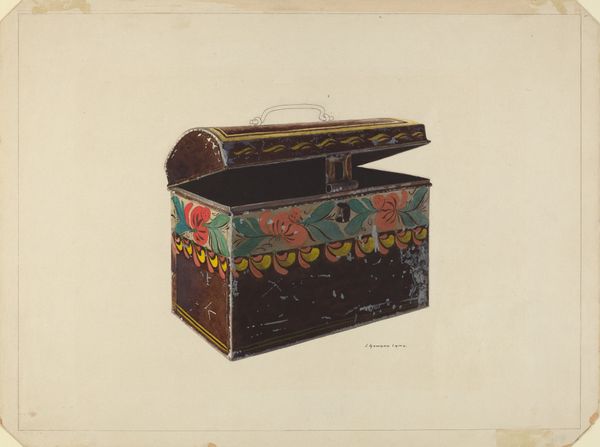
drawing, coloured-pencil, watercolor
#
drawing
#
coloured-pencil
#
water colours
#
watercolor
#
coloured pencil
Dimensions: overall: 40.7 x 30.5 cm (16 x 12 in.) Original IAD Object: 4 1/2" high; 4 7/8" wide; monkey: 2 7/8" high
Copyright: National Gallery of Art: CC0 1.0
Curator: This colored pencil and watercolor drawing, dating back to approximately 1939, is titled "Toy Bank: Monkey and Hurdy-Gurdy" by Cushman Parker. It depicts a mechanical bank designed to resemble a street organ, complete with a monkey figurine. Editor: It’s whimsical and strangely unsettling. The sharp angles of the bank contrast starkly with the rounded figures, creating an off-kilter balance. And that vacant background intensifies the almost theatrical presentation. Curator: Considering the sociopolitical climate of the late 1930s, it's crucial to analyze this seemingly innocuous depiction within broader cultural narratives. How does the representation of the monkey figure, and the Hurdy-Gurdy itself, reflect or subvert prevalent stereotypes? What socioeconomic structures are reinforced by marketing financial institutions, albeit toy ones, to children? Editor: Absolutely. Toy banks played a complex role. They weren't simply about teaching kids to save. They promoted the financial institutions of the time and idealized those values. We can't ignore the cultural messages about labor and class encoded within that simple financial lesson, right down to who the figures in the composition are. Curator: Exactly. We can see how such a toy implicitly endorses a capitalistic system, shaping the perceptions and behaviors of future generations in terms of personal finance and socio-economic inequality. The placement of the figures and their dress should also be considered as it relates to their historic background. Editor: Right. And examining the marketing campaigns associated with these kinds of toys could reveal insights into how they were perceived by different social groups and how this, along with the visual culture from where this springs, helped define childhood expectations and aspirations during that period. It gives us a deeper understanding of the history of consumer culture as a form of social control, too. Curator: It serves as a potent reminder that even the seemingly innocent artifacts can be vessels of deeply ingrained ideologies. Editor: Precisely. And analyzing the piece invites us to examine how institutions project, maintain, and naturalize particular world views, and also serves as a point of reflection of contemporary power structures.
Comments
No comments
Be the first to comment and join the conversation on the ultimate creative platform.
